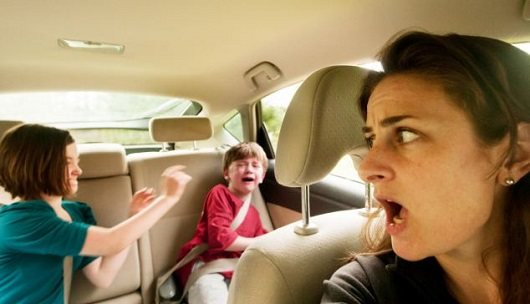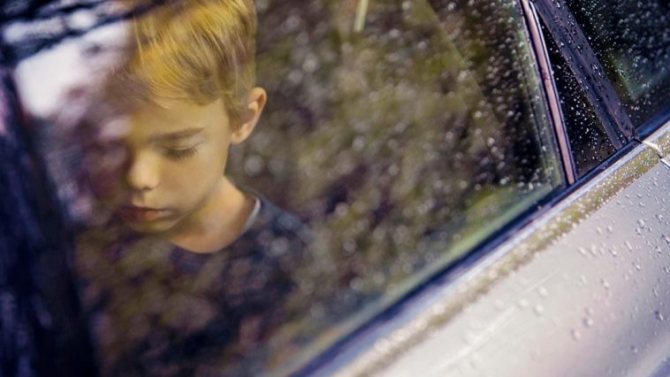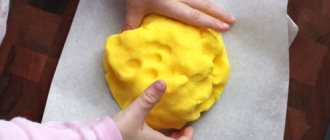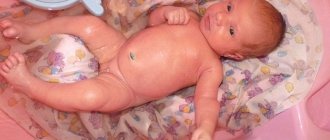What to do when a child gets motion sickness? How can I help him? How to solve a problem?
Nausea when moving is directly related to the vestibular system. It is he who is responsible for orientation and movement in space. Motion sickness is also called kinetosis or transport sickness. The fact is that when driving, a reaction to irregular movement occurs, which gives an impulse to the vestibular apparatus. This leads the body to serious disorders.
The main signs of motion sickness:
- weakness, pallor, malaise, possible fainting;
- headache and dizziness;
- abdominal pain, diarrhea, vomiting;
- crying, drowsiness, excessive salivation;
- Odor intolerance and heart rhythm disturbances may appear.
It is important to quickly notice and distinguish the symptoms of kinetosis from diseases of the ENT organs or gastrointestinal tract.
Often, motion sickness causes the child’s hearing, taste buds, and sense of smell to be distorted. This is mainly felt by children aged 1-2 years.
Motion sickness, causes and ways to help a child - emergency care from Dr. Komarovsky
A child gets sick in a car: What to do?
Unfortunately for parents, our children often start getting motion sickness while traveling. And at this moment, many of us begin to panic, not knowing what to do, and also make a number of mistakes. As a result, it is not uncommon for parents to make things worse for their children. So what to do if your child gets motion sickness while driving? What to do and is it possible to avoid motion sickness?
See also: How to survive a long car ride
Fortunately, many parents have learned to deal with their children's nausea through hard experience. For those who have not yet encountered these troubles on the road, here are some things that you should definitely know if you go on a trip (especially a long one) with your children.

Please note that if a child begins to feel sick in the car, the situation is much worse compared to motion sickness in a teenager or adult. After all, a teenager or an adult can, if necessary, ask to stop the car and open the door. The child, as a rule, sits in a child seat and can let you know that he is not well. In this case, as a rule, children begin to vomit right in the car. You understand what comes of this.
Therefore, before we get into tips that will help you get rid of the effects of your child's nausea, we want to say that every driver transporting children (especially small ones) should have a bag or bag in the car that will help protect the interior from vomit.
Here's something else you need to have with you on the road in case your child gets sick from motion sickness:
Paper towels. The larger the roll, the better.
Carpet cleaner (preferably spray).
A large number of plastic bags. This is not the most environmentally friendly material, but keeping a large stack of plastic bags in the car is very useful to protect the interior as much as possible from pollution.
Change of underwear for the child.
Baby wipes. Be sure to seal the tissue packaging well as they may dry out.
Latex gloves. A few pairs of rubber gloves will make cleanup a little more bearable.
Garbage bag (large) with drawstrings
Air freshener (spray).
Towel.
At first glance, the list of things you need to take with you on the road in case your child gets seasick while driving looks very impressive and it may seem that there is no place to put all this in the car. But in fact, you can pack all these things into one small backpack that you can always find somewhere to put in your car.
Having collected a similar set of things in a backpack, you will be ready for any incidents associated with your child’s motion sickness.
Keep calm!

Do you know what is most important if your child starts to feel sick? It's staying calm. Yes, of course, it is very difficult to remain calm when your beloved child becomes ill. But remember that if you panic and are very nervous, your child will feel it and will be even more nervous. As a result, the symptoms of motion sickness can only worsen and prolong.
Also, under no circumstances scold your child for not warning you about nausea, which ultimately led to severe contamination of the seat upholstery and floor. Remember that the child is not to blame for anything. Maintain your composure. This is the main thing you should do first.
Among other things, your task is to constantly reassure the child, telling him that everything will be fine and the nausea will soon pass.
In addition, you must be mentally prepared for the fact that if your child gets carsick and vomits, he will be very upset and uncomfortable in front of you. Therefore, do not start up or get angry under any circumstances, regardless of the consequences of the incident for your car.
Vestibular apparatus training
There are several ways to train the vestibular system:
- Training on specialized equipment in combination with medications. It is allowed to be carried out only in hospitals and clinics.
- Constant sports training and dancing have a positive effect on the vestibular system.
Before enrolling your child in any sports section, be sure to consult a doctor so as not to cause harm. If you want to train at home, then start with smooth, slow movements, 1-2 minutes, 2 times a day. Gradually increase the tempo and time, elements. Try running and swimming.
Exercises
- Dedicate your first workouts to circular movements of your head, bend to the right/left, forward/backward.
- Together with your child, bend your torso forward/backward, right/left. Rotating movements of the torso will also help, with your hands on your belt and bent at the elbows.
- Place your hands on your waist and start jumping. First on two legs, then on one. Watch your breathing and head position. If you feel normal and don’t feel sick, then you can turn your head. Then the exercise will be more effective. Can be performed in water.
Rating: 5, Votes: 4
Why does a child get seasick?
The ability to walk and stand upright, perform complex movements in dance or sports, and maintain balance is based on a complex interaction between the eyes, ears and brain. The eyes and ears send signals to the brain about every change in our posture.
At the same time, during “passive movement,” that is, while driving a car, on a train, flying on an airplane, or while sailing on a boat/ship, the sensory and visual organs send signals to the brain about moving in space, but the muscles that The logic of the brain must work to ensure this movement remains at rest.
Such a discrepancy in the received data causes dissonance in the nervous system, which, in turn, begins to send “panic” impulses to the body. As a result, the vomiting center in the brain is activated, causing nausea and vomiting, sweating increases, and breathing problems often begin.
What does modern pharmacy offer?
Today there are medicines for everything, and of course, they also sell remedies for motion sickness. Only the youngest cannot take them - they are created for children from 3 years old, and are taken 30 minutes before boarding a car or bus. The active ingredient of such drugs is dimenhydrinate. You can also use products containing domperidone. This can be given to the youngest passengers. Don’t forget about sedatives for those whose illness is caused by nervousness.
There are also more serious drugs with an antiemetic effect, but you should not prescribe or give them to a child on your own. It is better to consult a doctor, describe the problem to him, and then he will decide what to do and what is best to take.
Thus, coping with the problem is quite possible. If precautionary measures or traditional methods do not help, it remains possible to help the person with medications.
Complain
How to minimize the symptoms of motion sickness?
When getting into a car, a child needs to create suitable conditions. Then the manifestations of the disease will be much less. So, it makes sense to exclude sudden maneuvers in traffic jams, rapid acceleration and deceleration. It's better not to get stuck in traffic jams at all. But if there is no choice, you should ensure the smoothest possible ride. True, it is still impossible to completely eliminate nausea and vomiting, and attacks can be sudden. So it’s worth having spare clothes for your baby in the car in any case. Wet wipes and a bottle of water will also come in handy.
When understanding why a child feels sick in a car, it should be noted that the reason for this may be the heat in the cabin, as well as foreign odors and stuffiness. If you want to provide the most comfortable environment, you should set the air conditioner to 21-22 degrees and point it in any direction, but not at the child himself. It’s also worth taking care of your baby’s clothes, because they should be as comfortable, light, and natural as possible.
If you are driving on uneven terrain, you should drive slowly to give your child time to adapt to the changes. The same goes for driving under a cloud; you should also slow down. Surprisingly, even these factors, invisible to an adult, can affect a child’s body, provoking an attack of nausea.

What to do if a child gets motion sickness?
Once kinetosis has manifested itself, it is important to promptly prevent its development and reduce the number of symptoms that appear. This can be done in a variety of ways, including the use of medications.
Pediatricians recommend having your child examined shortly before the trip to check for vestibular dysfunction. This is especially necessary in cases where the child will be on a train or plane for a long time.
Note : if a child loses consciousness during a trip or flight, do not panic. In young children under three years of age, there is a protective reaction against motion sickness, which manifests itself in sleep.
General recommendations and where to sit during the trip
When symptoms of kinetosis appear, you need to respond quickly to prevent further deterioration of the situation. Pediatricians give several recommendations that will help reduce or suppress the symptoms of motion sickness:
Fresh air. When traveling in a personal car, you need to periodically stop and get out of the car with your child. Circulating fresh air will help saturate the body with the proper amount of oxygen. Vomiting, dizziness and increased sweating - these problems will be eliminated. If it is not possible to get out of the vehicle, you need to put the baby in a horizontal position and put a damp cloth on the forehead (a napkin will do).
Night is a great time to travel with a child who gets motion sickness.
Sleep is a remedy for motion sickness in transport. Unfortunately, not every child can fall asleep due to discomfort. If your baby remains awake, distract him. You can play a low-impact game with him or sing quietly. Concentrating on extraneous activities will help you endure the trip.
When traveling by car, the child seat must be positioned so that the child can see the landscape only through the windshield. A rapid change of landscapes will negatively affect visual perception, which can harm the baby. If you are traveling by train, do not let your child look out the window until the train stops.
An empty stomach on the road will only worsen the imbalance in the vestibular system, but overeating will also negatively affect the child’s well-being. The last food intake is made several hours before departure from the departure point.










